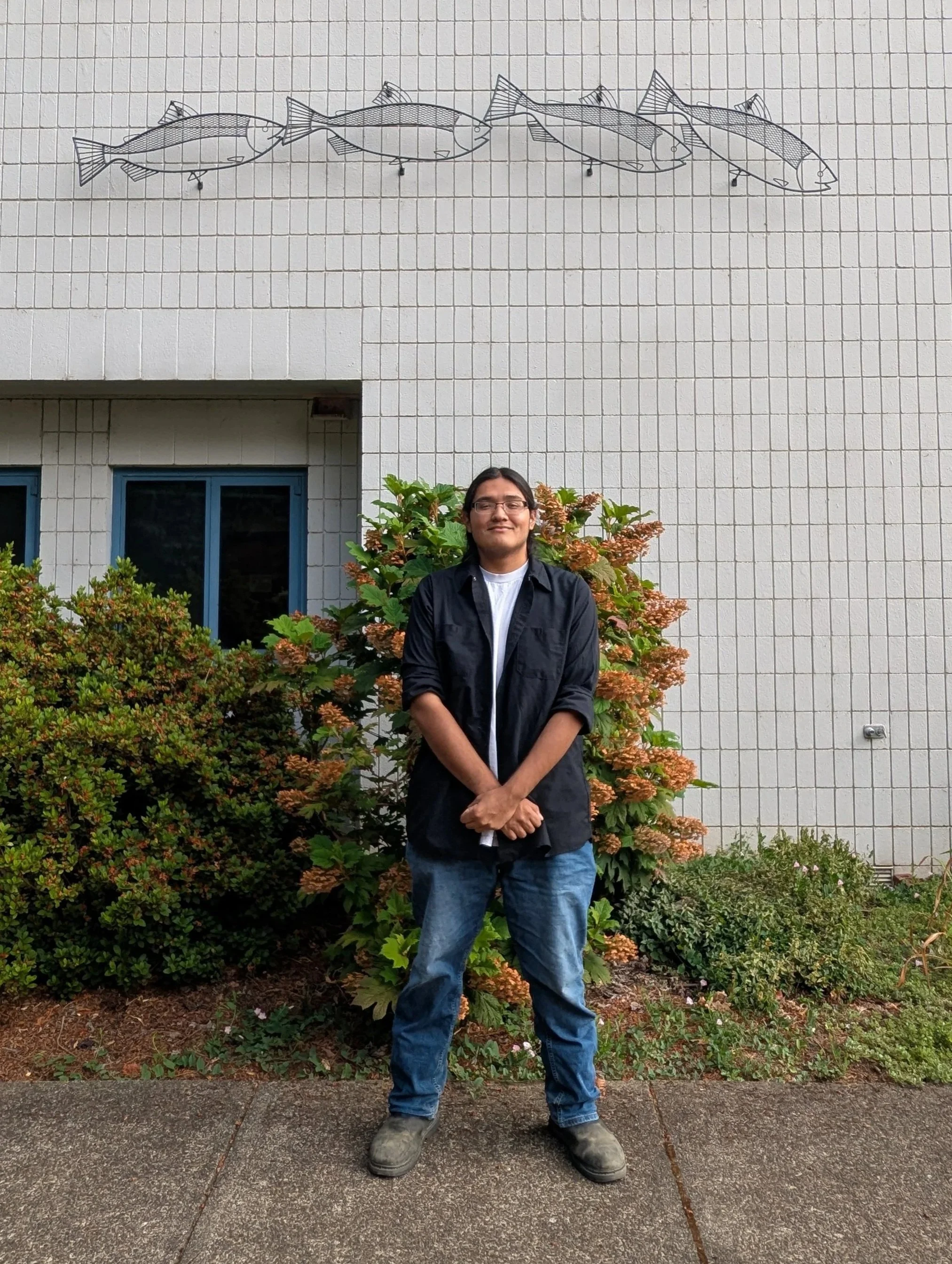Another VIEW Fellowship Summer Completed!
Over the summer, undergraduate student Cristian Burke was selected for the Vanguarding an Inclusive Ecological Workforce (VIEW) Fellowship, hosted by the Fisheries, Wildlife, and Conservation Sciences Department. The VIEW Fellowship aims to provide a mentored research experience to members of underrepresented communities or backgrounds, pairing participants with a faculty member/lab for the summer. VIEW placed him in the Fish Behaviorscapes Lab (FBL), where he worked under the supervision of FRA Ashley Sanders at the Aquatic Animal Health Lab (AAHL) to study hatchery fish ecology and work as a facilities technician. He did a stellar job learning a new analysis software and we are looking forward to working with him through the school term - thanks Cristian!
Cristian Burke - VIEW Fellow in Summer 2025
We asked Cristian to tell us a little about what he did over the summer:
In this fellowship, I worked on the Olfactory Imprinting Project (OIP), a project dedicated to better understanding how salmon imprint and home. Part of the project is focused on how olfactory imprinting, or a fish’s ability to remember smells in the water, can be used by fish managers to draw hatchery fish back to where they were released. A few years back, the OIP team ran a series of behavioral Y-maze experiments with juvenile Fall Chinook Salmon to find new imprinting odor candidates, or odors that neither inherently attract or repel fish, but that they may be able to imprint on and use to home.
In these trials, a juvenile fish is placed at the base of a maze with water running from 2 branches, 1 with an odor dripped into it and another without, just well water. The fish acclimates for 5 minutes at the base of the maze until a gate is pulled and it is allowed to travel anywhere in the maze during a 10 min trial period. Once the trial is finished, fish are removed, the odor arms are switched, and another trial with a new fish begins. These trials are conducted in the dark and video footage is captured from above looking down on the mazes that are illuminated with infrared light from below.
My contribution to the OIP involved processing and analyzing the team’s footage of those trials (15 odors x 96 trials) with a video processing software called Ethovision XT. I was tasked with specifying the areas of interest, running the tracking software, then correcting points in the tracking where the software made mistakes. The data are then downloaded, saved, and analyzed with a code we developed in R Studio.
Snapshot of what Ethovision video processing looks like
Working with the video footage can be a long, frustrating process if the stars align in the worst ways, but it’s rewarding when patterns and solutions that improve efficiency begin to manifest. So far, the footage from 3 out of the 15 odors tested have been fully processed. Despite the conclusion of the 2025 VIEW Fellowship, I will continue to work with the FBL to finish the rest of the video processing and explore the full capacities of the processing software to answer other questions. Additionally, I will begin working on an individual project to present at an upcoming conference, stay tuned!
-Cristian Burke

